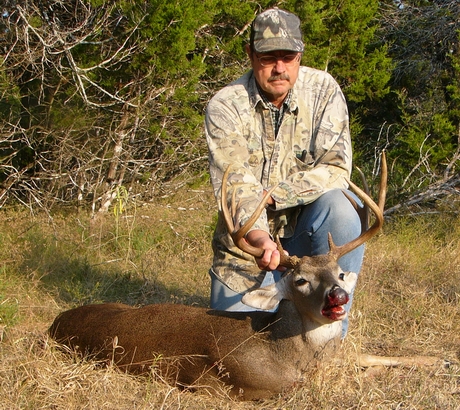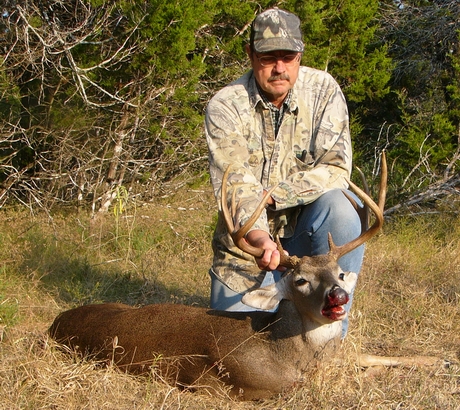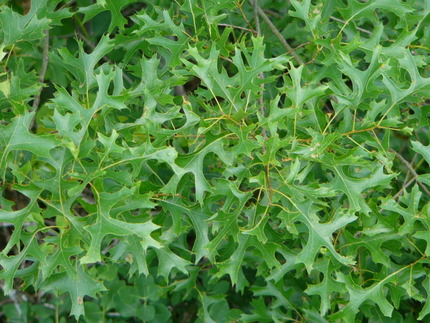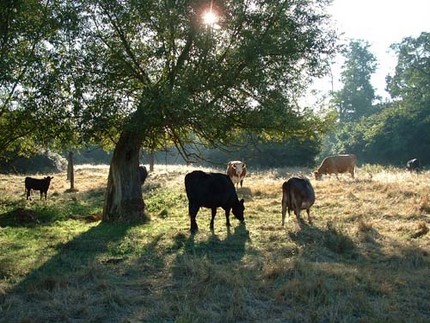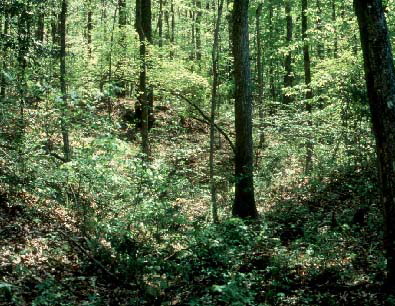Brush management is the selective removal or suppression of target woody species, including exotic species, to allow the increased production of desirable trees, shrubs, grasses, and forbs for forage and cover. This practice includes retaining the proper kind, amount, and distribution of woody cover for selected wildlife species.
Brush management planning must consider deer and other wildlife cover requirements, soil types, slope angle and direction, soil loss and erosion factors, and subsequent planning to control reinvasion. This practice also includes the retention of snags to provide cover and nesting sites for cavity nesting animals. It can also include the planting of native tree and shrub species to provide food, corridors and/or shelter where these habitat components are limited.
First and foremost, the emphasis of brush management should be in areas with the best soils?it is here you will find the greatest potential for increased production of preferred species of herbaceous and woody plants. Woody cover should be retained in areas of shallow soils and/or steep and rocky terrain where vegetation removal and soil disturbance would enhance soil erosion and where the response of preferred plants would be minimal.
Denser cover should also be retained along drainages and other natural breaks in the terrain. These blocks of cover can serve as travelways and as “refuges” that wildlife can retreat into for security when disturbed and for protection from inclement weather.
In Texas, the control of plant species such as ashe juniper, eastern red cedar, mesquite, prickly pear, and oak species that invade a variety of rangeland sites is often warranted. When these species dominate an area, they diminish plant diversity and the quality of habitat for most wildlife species. Vegetation manipulation may be in the form of prescribed burning, mechanical, biological, or chemical control of trees, brush, or weeds. Most of these practices will require the use of specialized equipment or machinery for plowing, discing, bulldozing, spraying, or other vegetation or soil manipulation procedures. The cost effectiveness of the different control measures must be considered prior to initiation of control measures.
Prescribed burning under a predetermined set of guidelines and plans is the most cost-effective habitat management tool that can be used to enhance plant diversity by stimulating the production of a variety of forb and grass species. It is also effective in controlling low-growing woody plants and maintaining them at the low heights most beneficial to wildlife. Livestock as well as wildlife can benefit from a properly planned and conducted prescribed burn. However, there are legal constraints and liabilities in the use of fire. The land manager should be well-trained and knowledgeable on the proper use of fire before attempting a prescribed burn.
A written burn plan should be developed that specifies the environmental conditions under which burns should be conducted. A long-range burn plan for a ranch should indicate the number of acres that are planned to be burned annually and the general burning cycle. A 5-7 year burning cycle, where an area is burned once approximately every 5-7 years, is generally recommended for north and central Texas. The burning cycle in your area will vary with the plant community, soil type, and rainfall in your area.
Mechanical equipment can also be used to control woody plants, and can be highly effective on smaller, targeted sites. The use of mechanical equipment to control woody plants will typically result in an initial growth of forbs and annual grasses and the resprouting of many woody species.? Soil disturbance associated with mechanical controls releases the natural seed bank found in the soil, increasing the quantity, quality, and distribution of plants beneficial to wildlife. However, without periodic follow-up treatments of fire, herbicides, or additional mechanical manipulations, and/or without proper livestock grazing management, these sites will eventually again become dense stands of regrowth brush and trees.
Mowing (shredding) areas of herbaceous plants and/or low-density woody plants is another form of mechanical treatment. Mowing should be postponed until after the peak of the nesting/young-rearing period of local ground-nesting birds and mammals. One-third of open areas can be mowed per year, preferably in strips or mosaic types of patterns, to create “edge” and structural diversity.
Biological control can also be implemented to control brush in certain situations.? Biological control is the use of heavy grazing pressure by livestock such as goats to control or suppress woody plants and sheep to control herbaceous weeds. Long-term heavy grazing pressure by goats, which prefer woody browse but will also consume forbs, will eliminate all leaves from woody plants up to a height of four feet.
The creation of this “browse line” and the resulting park-like appearance of the woody plant community will have negative effects on the?deer that also depend on the low-growing foliage of woody plants for both forage and cover. Heavy grazing pressure by sheep, which prefer forbs, will reduce or eliminate forbs that are also beneficial to deer. Under certain management goals, short-term biological control of woody plants and forbs can be a legitimate practice if done correctly.? However, it is not normally a recommended wildlife habitat management practice.
Finally, chemicals can also be used to control the growth of woody plants. The use of chemical herbicides can have a significant negative impact on many plant communities and may suppress or eliminate plants other than the target species. From a wildlife habitat management perspective, the use of herbicides is one of the least desirable methods of vegetation control. If herbicides are used, selective applications, rather than broad-scale applications, are recommended to avoid the elimination of plants that are important to wildlife. When used, herbicides should be applied in strict accordance with label directions.
